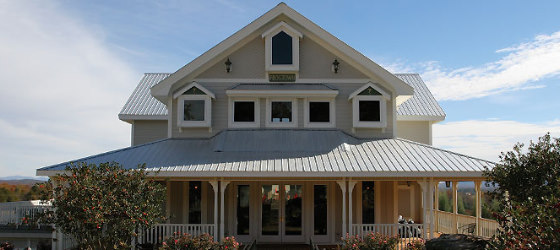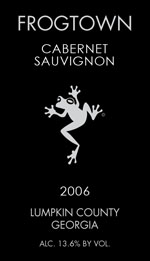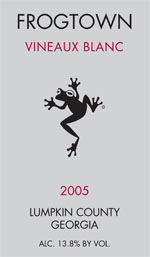|
It has been years, decades actually, since I experienced a Georgia summer. I remember the boiling sun by day and the steamy thunderstorms by night. I have no memory of sultry evenings spent sipping Georgia Roussanne. I am certain that I never spied a vineyard in Georgia during my frequent visits when I briefly worked as a journalist at a newspaper in North Carolina.
A winery from Georgia, Frogtown Cellars, caught my eye as I scanned the results of the 2011 San Diego International Wine Competition, which was held in early April. Frogtown, a 57-acre wine estate situated in the foothills of the Appalachian Mountains, had won seven medals, five of them gold. Winemaker and owner Craig Kritzer quickly shot me an email to say how thrilled he was. He was thrilled and I was stunned. I wondered how a winery from Georgia (that I had barely heard of) could mingle with the big boys in a major international wine competition and skate off with five gold medals. Kritzer was more than happy to make the case for Georgia wine. "Georgia is a surprise to most people in the wine business," he told me. "In my opinion, the premium grape growing region is quite small. The geologic area where Frogtown is located is called the Dahlonega Plateau.
He went on to explain that the growing season in and around the Frogtown estate is longer by at least two weeks than the viticultural area of nearby North Carolina. That extra time on the vine, Kritzer believes, enables Frogtown to produce red wines that possess more lush fruit and texture than is common for the reds of the southeastern United States. "Yes, we are humid," he said. "I have learned over 13 years of growing grapes and making wine that I can deal with hydration but not unripe fruit. Most viticultural areas on the East Coast simply cannot ripen fruit to the degree necessary to make premium wines. He added that Frogtown’s conditions are similar in a couple of critical areas to those in California, arguably America’s most successful location for viticulture. "Frogtown’s ‘degree days’ and ‘chilling hours’ are very similar to premium wine growing regions of California. Frogtown’s overnight cool-down, while not as dramatic as (most) California regions, does cool down to below 70 degrees Fahrenheit, even when temperatures reach 90-plus degrees Fahrenheit during the day."
"The 2006 Bordeaux varieties are very supple, possessing ample tannin," Kritzer says of his current release of reds. "In this manner, they are similar to very good Bordeaux, only possessing more fruit." |
|
|
|
8


 "This area is approximately one hour south of North Carolina. Elevations are no lower than 1,500 feet above sea level. Frogtown vineyard is planted on steep hillsides from 1,675 to 1,825 (feet of) elevation."
"This area is approximately one hour south of North Carolina. Elevations are no lower than 1,500 feet above sea level. Frogtown vineyard is planted on steep hillsides from 1,675 to 1,825 (feet of) elevation." The evening cool-down is essential to the structure of a fine wine, particularly the red Bordeaux grape varieties that Frogtown produces. The cooling helps preserve acidity and freshness, which ultimately results in more elegant, refined wines.
The evening cool-down is essential to the structure of a fine wine, particularly the red Bordeaux grape varieties that Frogtown produces. The cooling helps preserve acidity and freshness, which ultimately results in more elegant, refined wines.